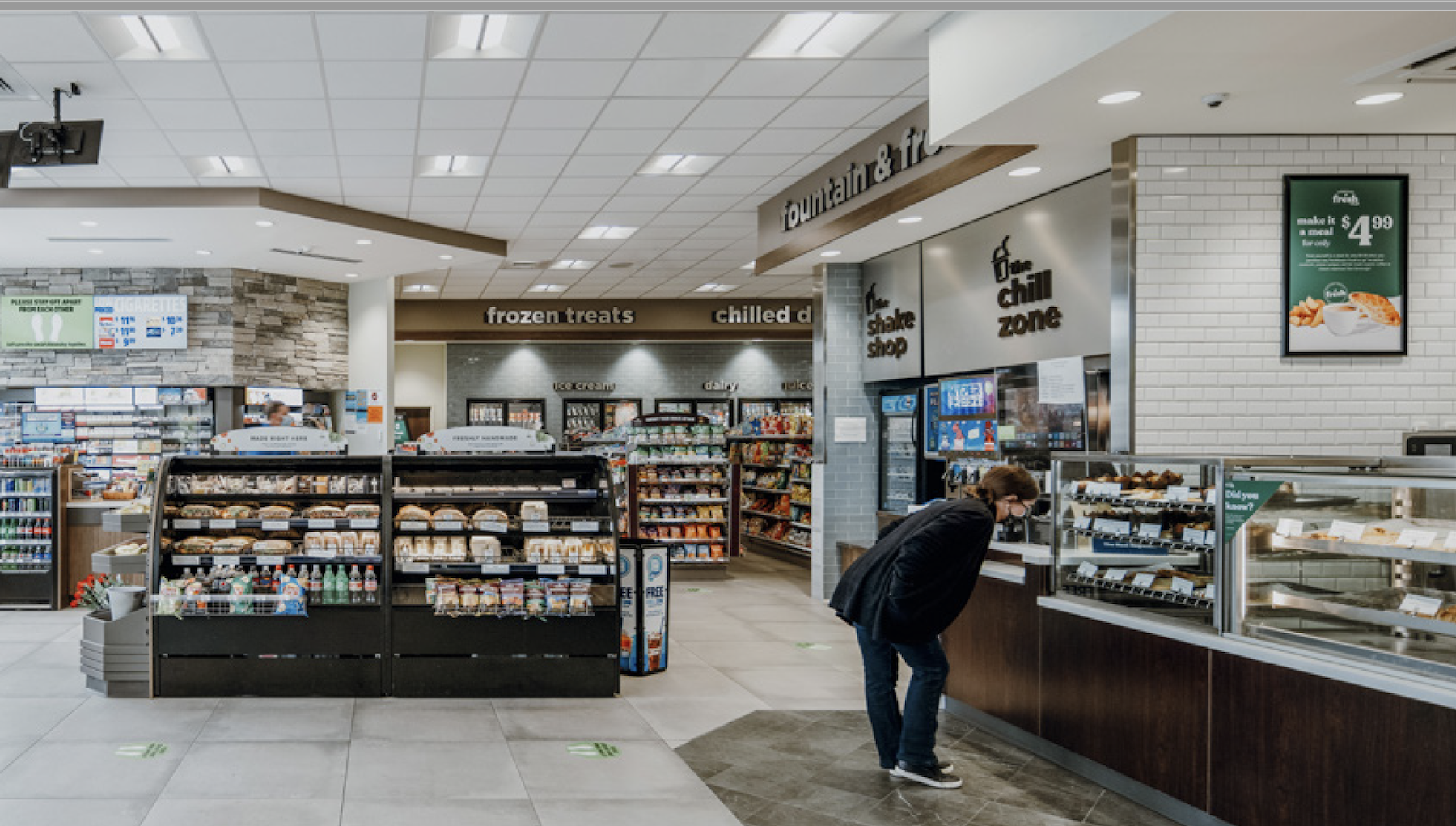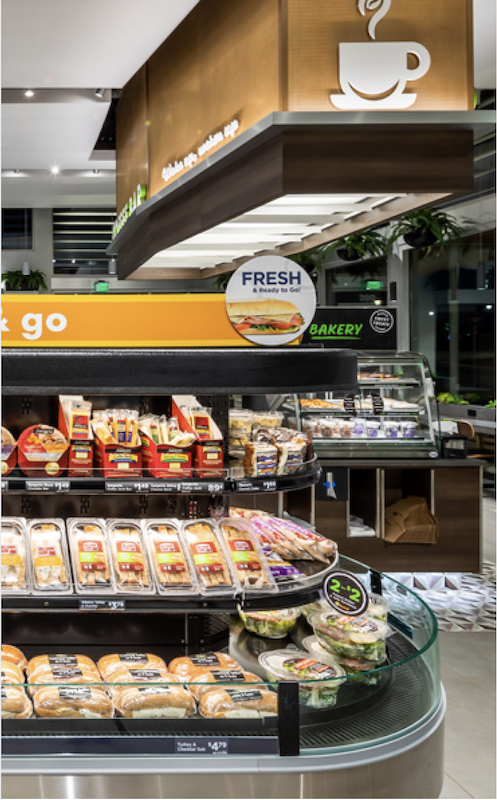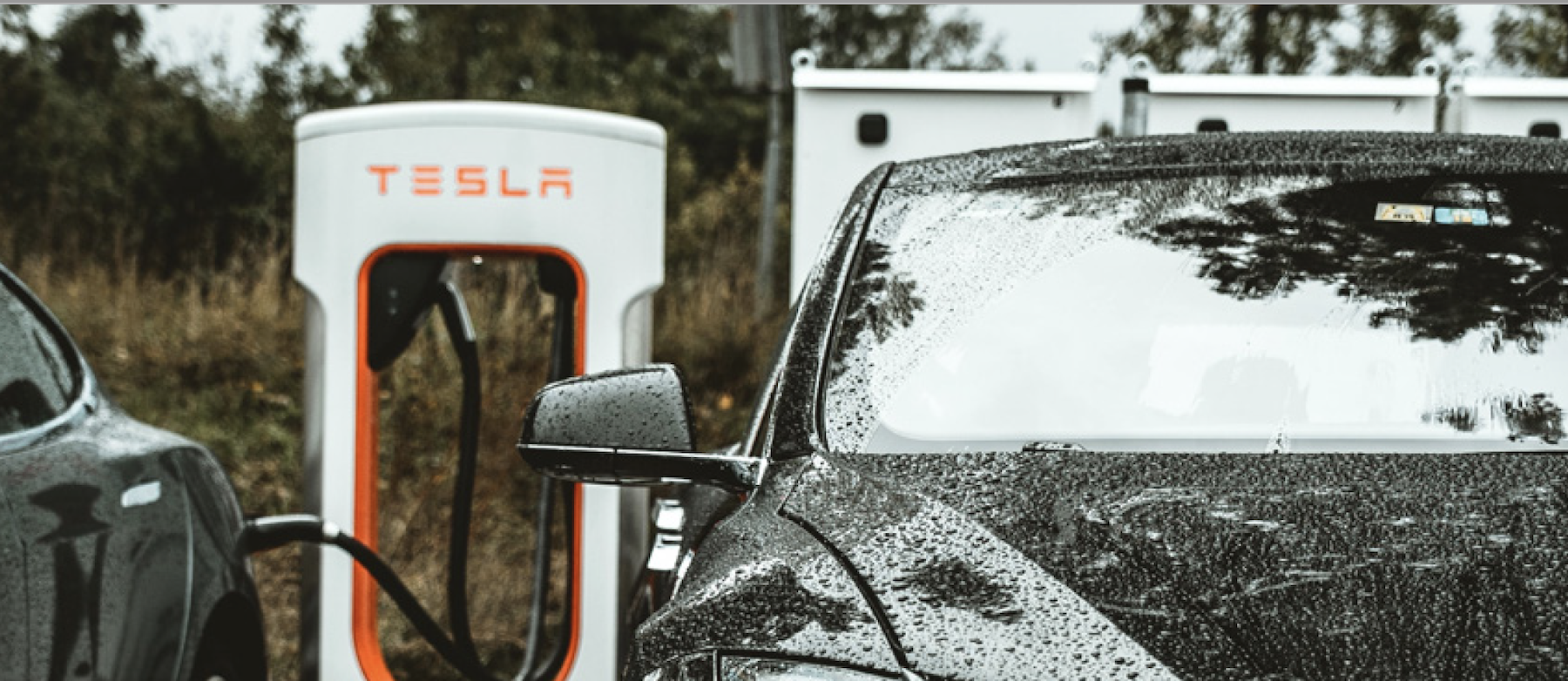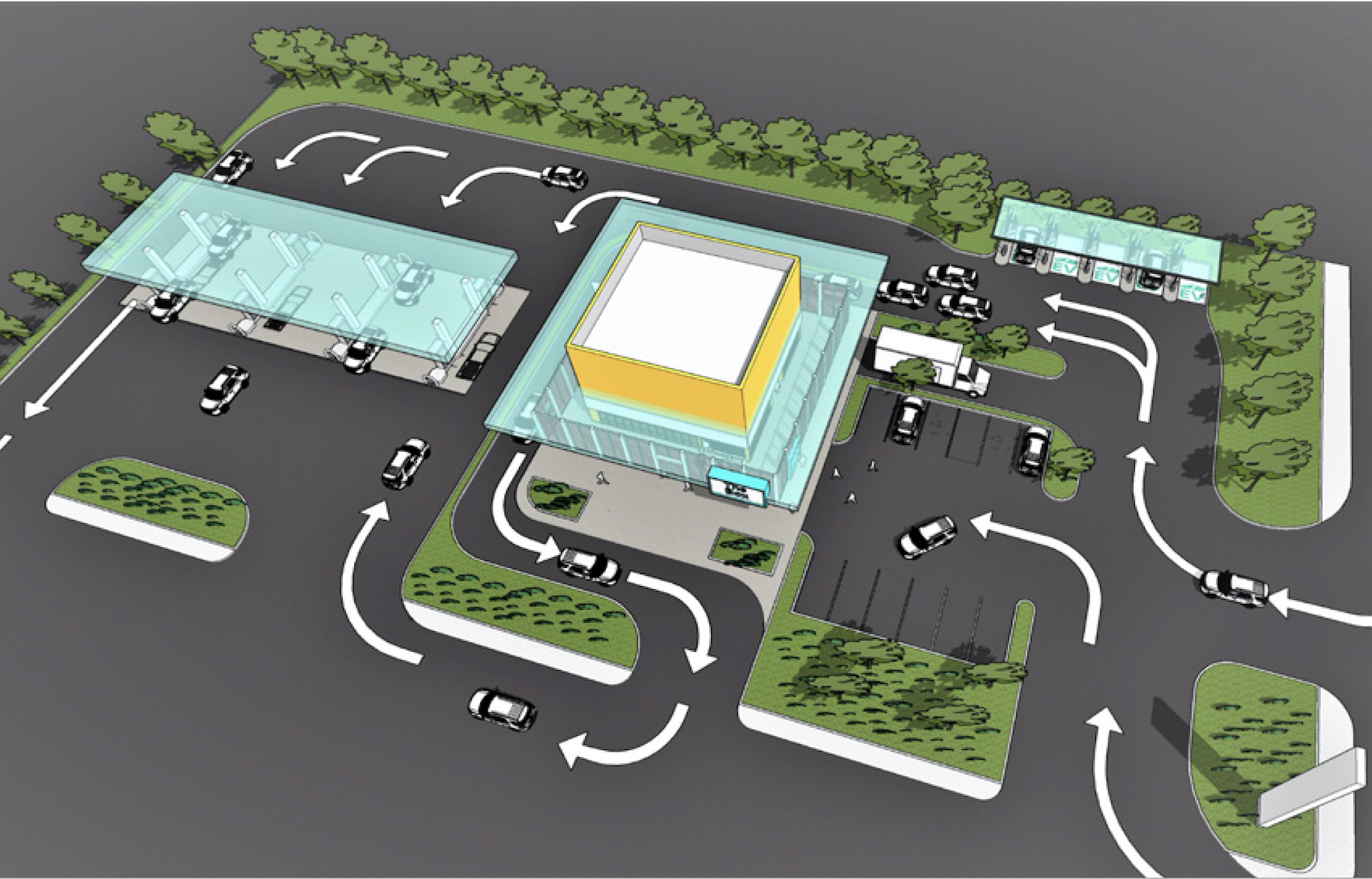During the coronavirus pandemic in 2020, the average purchase at convenience stores in the U.S. rose by nearly 10%, according to CSP Magazine. A new whitepaper on the future of convenience stores urges dealers to “preserve and amplify that neighborhood feel” as a strategy for sustaining and expanding their businesses in a post-COVID era.
The whitepaper, coauthored by James Owens, AIA, NCARB, Vice President at HFA, and Joseph Bona, Founding Partner and President, Bona Design Lab, offers wide-ranging advice that revolves around five points:
OMNICHANNEL INTEGRATION
The challenge ahead for c-stores is to maintain an elevated brand experience amid increasing technical complexity of convenience retailing in the omnichannel age. “The ultimate goal,” according to the authors, “is to create a customer journey that is so simple you hardly notice how it all came together.”
AE and design firms and their c-store clients need to ramp up their collaboration, the paper asserts, by including in-house and third-party experts in areas such as data science, branding, technology, and food service.
The AE focus lies primarily in maximizing the integration of different omnichannel solutions, such as drive-through lanes, click-and-collect parking spaces, contactless vending machines and more. The goal of c-store design, moving forward, “should be to promote more efficient site and in-store circulation,” the paper states.
Areas of opportunity could include reinforcing customer loyalty and spurring return visits by harmonizing site and store design with retailers’ marketing initiatives; and reducing labor costs and boosting convenience and loyalty by optimizing site and store design for contactless payment/vending machines and scan-and-go technologies. Maintaining separation between self-checkout stations and the traditional POS counter is an approach “that can help preserve the integrity of the traditional c-store experience, while making for a fast and efficient app-driven purchase.”
AE and design firms need to factor in that the installation and adoption of omnichannel solutions is likely to require square footage that otherwise might have been used for on-site inventory. Fortunately, the paper notes, new approaches to fulfillment (such as the emergence of third-party micro fulfillment center companies) promise to make it easier and cheaper for convenience stores to allocate less space for on-site storage.
REVOLUTIONIZING CONVENIENCE STORE FOOD SERVICE

The authors assert that any lines that once separated c-stores from elevated food retailing “should be erased forever.” They contend that whole c-store concepts are now emerging with elevated food service as their foundation. A recent example is UPop (short for Urban Provisions Offering Petroleum)—entrepreneur Paul Nair’s new high-end food and beverage market slated for a Georgia Arco gas station in Atlanta, with a curated selection of chef-driven prepared foods, beer, wine, and liquor.
C-stores need to harness their site and store designs to maximize results as they reopen their food programs. Key phrases here, the authors state, include “healthy,” “fresh,” “creatively packaged and merchandised,” “customizable,” “novel” and “surprising.”
The authors contend that c-stores are now Quick Service Restaurants (QSRs), with equivalent needs for preparation and storage space as well as back-of-house/kitchen equipment. In their partnerships with AE and design firms, c-store clients need to put food service strategies—down to specific menu items and the types of equipment required to produce them—front and center. This is true regardless of whether it’s a brand-new location or a retrofit of an existing store, the authors state.

This confluence of trends also points to the likelihood that packaged foods will be increasingly important in c-stores’ food service programs—certainly for the short term and possibly longer.
ANTICIPATE CULTURAL SHIFTS
The authors observe that the c-store customer’s purchasing habits are anything but monolithic. A shopper in “id mode” could pick up alcohol, tobacco or vaping products, while a more health-conscious person might buy a copy of Yoga Journal magazine, a lemon-kale smoothie, and a bottle of lavender aromatherapy oil.
The paper homes in on how the sale of cannabis—whose recreational use is legal in nearly 20 states—might eventually extend to c-stores. “Industry stakeholders are already laying the groundwork” for that possibility. C-stores have a long history of selling age-restricted products in a safe and compliant way. “Why shouldn’t cannabis be an option as well,” the authors ask?
Forward-thinking c-store clients and AE and design firms should be considering the specifics of how cannabis sales could work in different types of locations. Legal and risk-management experts are seminal to these discussions, which will involve questions such as how new federal laws could interact with state and local restrictions, or how far c-stores in different states will need to be from churches or schools if they begin to offer THC-containing products.
“C-store clients and their design and AE partners should redouble their efforts to stay informed about emerging consumer trends,“ the paper states more generally. “C-stores have always been affected by demographic shifts, product innovations and regulatory changes. This will continue as they further diversify their offerings to meet more of their consumers’ daily needs and wants.”
CAPITALIZING ON ELECTRIFICATION

The whitepaper's authors explore how charging stations for electric vehicles are likely to play a role in c-stores’ future. “Does the future theme of convenience retailing design include ‘electrify everything?’ We think so, but with plenty of caveats.”
The number of EVs on U.S. roads could reach 18.7 million by 2030, up from 1 million at the end of 2018, and the global number is predicted to reach 245 million by 2030, more than 30 times today’s level. As EVs become more commonplace, c-store clients will face a raft of business decisions, many of which affect sites, stores and the customer experience. These include:
• Whether to install EV chargers at all
• How many to install
• The role, if any, of third-party providers in defraying costs
• How to integrate EV charging into digital pay/loyalty ecosystems.
As AE and design firms prototype various EV-centric concepts with their c-store clients, it makes sense to bring in technologists, energy analysts and policy experts.
Apps hold powerful potential to drive visits to c-stores that maintain EV charging stations—indeed, a variety of apps (including some offered by third-party EV charging companies) already steer drivers to sites that offer EV charging. C-stores could easily benefit by integrating their own promotions into these offerings.
As c-store visitors wait for their on-site EV charges to finish, this could translate into a greater overall need for space and/or the reallocation of space on existing sites. Convenience retail clients and their AE and design firms will likely need to take a more flexible approach to store prototypes—supersized sites with two dozen EV charging stations, mid-sized models with just a few, and mini-stores with one or none. A modular approach to design could drive greater prototype flexibility.
RETURNING TO THE CORNER MARKET
During the pandemic, as consumers became more wary of crowded places, they started shopping more at stores in their neighborhoods. And as the world draws closer to a post-pandemic era, many c-store leaders are now refocusing on giving customers the social interaction they’ve been missing, and on making sure their stores convey a strong sense of local identity. “It’s a smart play that stands to strengthen their efforts to maintain market share and loyalty amid channel blurring and ecommerce commoditization,” the authors state.
Their firms have been consulting with clients on a range of potential ways to accentuate “that neighborhood feel.” None of these approaches conflicts with ongoing efforts to ramp up tech offerings or to configure site plans that function efficiently in terms of operations, logistics and traffic/pedestrian flow.
The paper offers some “final words” on strengthening community connections, which include:
•Use products and their names, ingredients, and flavor profiles to add a local touch;
•Offer opportunities touch and feel merchandise;
•Leverage interior design; and
•Get more creative with outside spaces.
Related Stories
Office Buildings | Aug 10, 2023
Bjarke Ingels Group and Skanska to deliver 1550 on the Green, one of the most sustainable buildings in Texas
In downtown Houston, Skanska USA’s 1550 on the Green, a 28-story, 375,000-sf office tower, aims to be one of Texas’ most sustainable buildings. The $225 million project has deployed various sustainable building materials, such as less carbon-intensive cement, to target 60% reduced embodied carbon.
Market Data | Jul 24, 2023
Leading economists call for 2% increase in building construction spending in 2024
Following a 19.7% surge in spending for commercial, institutional, and industrial buildings in 2023, leading construction industry economists expect spending growth to come back to earth in 2024, according to the July 2023 AIA Consensus Construction Forecast Panel.
Standards | Jun 26, 2023
New Wi-Fi standard boosts indoor navigation, tracking accuracy in buildings
The recently released Wi-Fi standard, IEEE 802.11az enables more refined and accurate indoor location capabilities. As technology manufacturers incorporate the new standard in various devices, it will enable buildings, including malls, arenas, and stadiums, to provide new wayfinding and tracking features.
Engineers | Jun 14, 2023
The high cost of low maintenance
Walter P Moore’s Javier Balma, PhD, PE, SE, and Webb Wright, PE, identify the primary causes of engineering failures, define proactive versus reactive maintenance, recognize the reasons for deferred maintenance, and identify the financial and safety risks related to deferred maintenance.
Mass Timber | Jun 13, 2023
Mass timber construction featured in two-story mixed-use art gallery and wine bar in Silicon Valley
The Edes Building, a two-story art gallery and wine bar in the Silicon Valley community of Morgan Hill, will prominently feature mass timber. Cross-laminated timber (CLT) and glulam posts and beams were specified for aesthetics, biophilic properties, and a reduced carbon footprint compared to concrete and steel alternatives.
Architects | Jun 6, 2023
Taking storytelling to a new level in building design, with Gensler's Bob Weis and Andy Cohen
Bob Weis, formerly the head of Disney Imagineering, was recently hired by Gensler as its Global Immersive Experience Design Leader. He joins the firm's co-CEO Andy Cohen to discuss how Gensler will focus on storytelling to connect people to its projects.
Retail Centers | Jun 2, 2023
David Adjaye-designed mass timber structure will be a business incubator for D.C.-area entrepreneurs
Construction was recently completed on The Retail Village at Sycamore & Oak, a 22,000-sf building that will serve as a business incubator for entrepreneurs, including emerging black businesses, in Washington, D.C. The facility, designed by Sir David Adjaye, the architect of the National Museum of African American History and Culture, is expected to attract retail and food concepts that originated in the community.
Mixed-Use | Jun 1, 2023
The Moore Building, a 16-story office and retail development, opens in Nashville’s Music Row district
Named after Elvis Presley’s onetime guitarist, The Moore Building, a 16-story office building with ground-floor retail space, has opened in Nashville’s Music Row district. Developed by Portman and Creed Investment Company and designed by Gresham Smith, The Moore Building offers 236,000 sf of office space and 8,500 sf of ground-floor retail.
Digital Twin | May 8, 2023
What AEC professionals should know about digital twins
A growing number of AEC firms and building owners are finding value in implementing digital twins to unify design, construction, and operational data.
| Apr 28, 2023
$1 billion mixed-use multifamily development will add 1,200 units to South Florida market
A giant $1 billion residential project, The District in Davie, will bring 1.6 million sf of new Class A residential apartments to the hot South Florida market. Located near Ft. Lauderdale and greater Miami, the development will include 36,000 sf of restaurants and retail space. The development will also provide 1.1 million sf of access controlled onsite parking with 2,650 parking spaces.

















